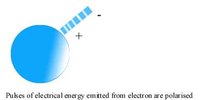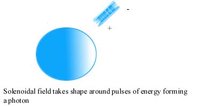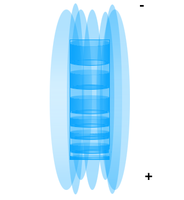First, I am not going to tell you that I'm receptive to your hypothesis.
P.S. I have exceeded the number of permissible characters, so I will just quote the first phrase of each of your queries.
Allow me to say, that what you propose is certainly very acceptable. I like the idea of quantum mechanics as long as it is restricted to empirical data. For instance, Max Planck’s discovery that energy was quantized, was as great a discovery as man’s discovery of fire. Einstein’s explanation of Brownian motion practically proved the existence of atoms, or at the very least paved the way for an acceptance of their existence. His explanation of the photoelectric effect, not only vindicated Max Planck’s discovery that energy was quantized but laid the foundations of modern physics, Neils Bohr’s tremendous work (and it was hard back breaking work) on atomic spectra laid open the secrets of the atom, and Rutherford, Soddy and the Curies, with the splitting of the atom and the transmutation of elements paved the way for nuclear energy. All in all, the achievements of quantum mechanics equal or eclipse the achievements of Classical physics. I have no quarrel with that.
My problem starts with the esoteric, unsupported theories of quantum mechanics. Take wave-particle duality, the only thing to support it is speculation and (I am told) atrocious mathematics. Imagine that the speed of the ‘matter wave’ (no-one including De Broglie, or even Einstein for that matter, was able to explain what matter waves were or even what was waving) always exceeds the speed of light by the expression. v
m x v
p = c
2. Where v
p is the velocity of the particle and v
m is the velocity of the matter wave. This means that if a particle has a velocity of 2.18 x 10
6 m/s the velocity of the matter wave would be c
2 / 2.18 x10
6 = 4.122 x 10
10 m/s . You must excuse me, if I am criticizing long held beliefs, but it seems to me that anything that is travelling at 100 times the speed of light cannot have anything to do with something occurring locally. Yes, it is possible to elude and ameliorate and waffle. But facts are facts. To imagine that the whole edifice of wave-particle duality is based on such waffling is quite horrifying. From this one inclusion of a supposed property come, superposition where an object can be in two or more places at the same time, multiple dimensions (In our Universe, there are only 3 dimensions [if time is added 4 dimensions] it is almost impossible to describe additional dimensions, physicists have been trying for years, with what can only be called limited success, the apparent ability to dematerialize and then to materialize again as happens with light in transit, and so on. I could go on about how wave-particle duality was only introduced to explain why the electron did not radiate away all of its energies and spiral into the nucleus. Today, wave-particle duality has been superseded by gauge theories according to which the electron is constantly emitting and absorbing ‘virtual’ photons and in the process self-regulating its energy so that there is no possibility of its falling into the nucleus.
The main theory of light that we have right now is Quantum Electro Dynamics.
Fine, yes, and if one looks at Feynman diagrams (I am not implying that all Feynman diagrams are correct) it is possible to see that the theory of why electrons do not fall into the nucleus explained at the end of the last paragraph, has some merit
. Take two electrons that approach each other. At a certain distance they appear to repel each other. The question is why does this repulsion takes place? According to quantum Electro Dynamics the two electrons are emitting ‘virtual’ photons causing the repulsion.
You are conceptually moving into QFT. Your idea of particles of light at 10−40 J pervading the Universe since the BB is incorrect.
Pardon me for saying so, but the present explanation of the CMBR and relic radiation is totally incorrect, I say this at the risk of raising umbrage. Think about it logically, atoms are 99.999999999% empty space, yet we are not able to walk through walls. Everything we do is through electromagnetic interactions. Without such interactions we would not be able to walk. Each time we pick up a pencil or touch something trillions of electrons have to re-arrange themselves. EMR does not hang around, it is constantly moving at c, to imagine that this CMBR is just hanging in place is quite unsatisfactory. No the CMBR is more a record of the distribution of matter in the Universe as it exists at present, meaning that the radiation from the massive hydrogen clouds, from which everything in the Universe had its origins (meaning that they are quite active) are the source of the radiation. Until a better explanation is reached as to how the CMBR can hang stationary in place it is unacceptable from the point of view of pure logic. As Galileo once said: “In questions of science, the authority of a thousand is not worth the humble reasoning of a single individual.” Galileo Galilei. A far more probable candidate for a Big Bang relic is Dark Matter.
The idea about polarizing the vacuum (that's where you seem to be leading to) is more or less in the spirit of the Standard Model, but again you are backing the wrong particles.
In my version the vacuum does not exist, the whole of space, the whole of the Universe, including all matter (because matter is permeable to the aether) is permeated by the aether (also called dark matter) which consists of infinitesimal electric di-poles, all oriented randomly until a real photon is emitted when they undergo polarization I the direction of the emitted photon.
Now a question: What do you mean by saying that photons obey the inverse square law?
Allow me for now, to assure you that the answer to this question is related to both how the Universe came to be populated by a virtual photon aether and also to how photons can spread out according to the inverse law, still maintain their energy (identity) intact and at the same time result in a reduced intensity of signal of the wave front in keeping with the inverse square law.
You need to be careful about how you talk about what a photon (or any other particle) is. A photon is not "both a wave and a particle" it has elements of both but it is neither.
Allow me to differ. The structure of the photon that I have put forward has a configuration that is absolutely stable. Schrodinger’s wave equation was introduced with a simi8lar aim in mind. If QM had accepted that the photon is a symbiosis of a particle and a wave, instead of (if you will pardon me) putting forward the ridiculous and improbable theory that it is both wave and particle but never possesses both properties simultaneously, it would have been more acceptable.
You have certainly heard of the Schrodinger wave equation. The Maxwell equations do just fine.
Schrödinger came up with the 'wave packet' to represent the electron. Using this treatment an electron appears to be a particle (i.e., possess the properties of a particle). This model had the advantage in that since a wave, any wave, would disperse the question of the electron radiating away its energy did not arise. However, a multi-dimensional space was required for this 'standing wave' model of the electron. Helium required a 6-dimensional space, lithium got 9 dimensions and uranium needed 276.
An almost instantaneous coming together, a localisation at one point in space would have to take place every time an electron was detected as a particle. Secondly when attempts were made to apply the wave equation to helium and other atoms, Schrodinger’s vision of the reality that lay beneath his mathematics disappeared into an abstract multi-dimensional space that was impossible to visualize. The wave function of an electron encodes everything there is to know about its' single three dimensional wave. Yet the wave function for the two electrons of the helium atom could not be interpreted as two three dimensional waves existing in ordinary three dimensional space. Instead the mathematics pointed to a single wave inhabiting a strange six-dimensional space. In each move across the periodic table from one element to the next, the number of electrons increased by one and an additional three dimensions were required. Schrodinger was never able to come to terms with the fact that his construct did not represent ‘reality’. All Max Born did was to shift Schrodinger’s equation out of the atom and into space. Where it took on the name of the wave-function and , if you ask me, it has not fared any better. Sorry for such a lengthy answer but your questions are not easy to answer.
Last, your extrapolation of your field of low energy photons into dark matter is pretty much just that... an extrapolation.
It isn’t an extrapolation, the theory of a Universal aether is something that has existed since before Aristotle. Also, note I have my own theory of gravity which closely echoes Newtonian gravity but avoids the disastrous action at a distance error that is falsely attributed to him.
Lastly, I hope (not in vain, I trust) that due consideration will be given to my answers. My advice is don’t be in a hurry, take your time. Try to apply a rational mind to what I have written. Remember that quantum mechanics is a wonderful theory, except for the esoteric, almost voodoo like parts, that I had mentioned. If you like, just give the word and I will give an account of how photons can follow the inverse square law.



